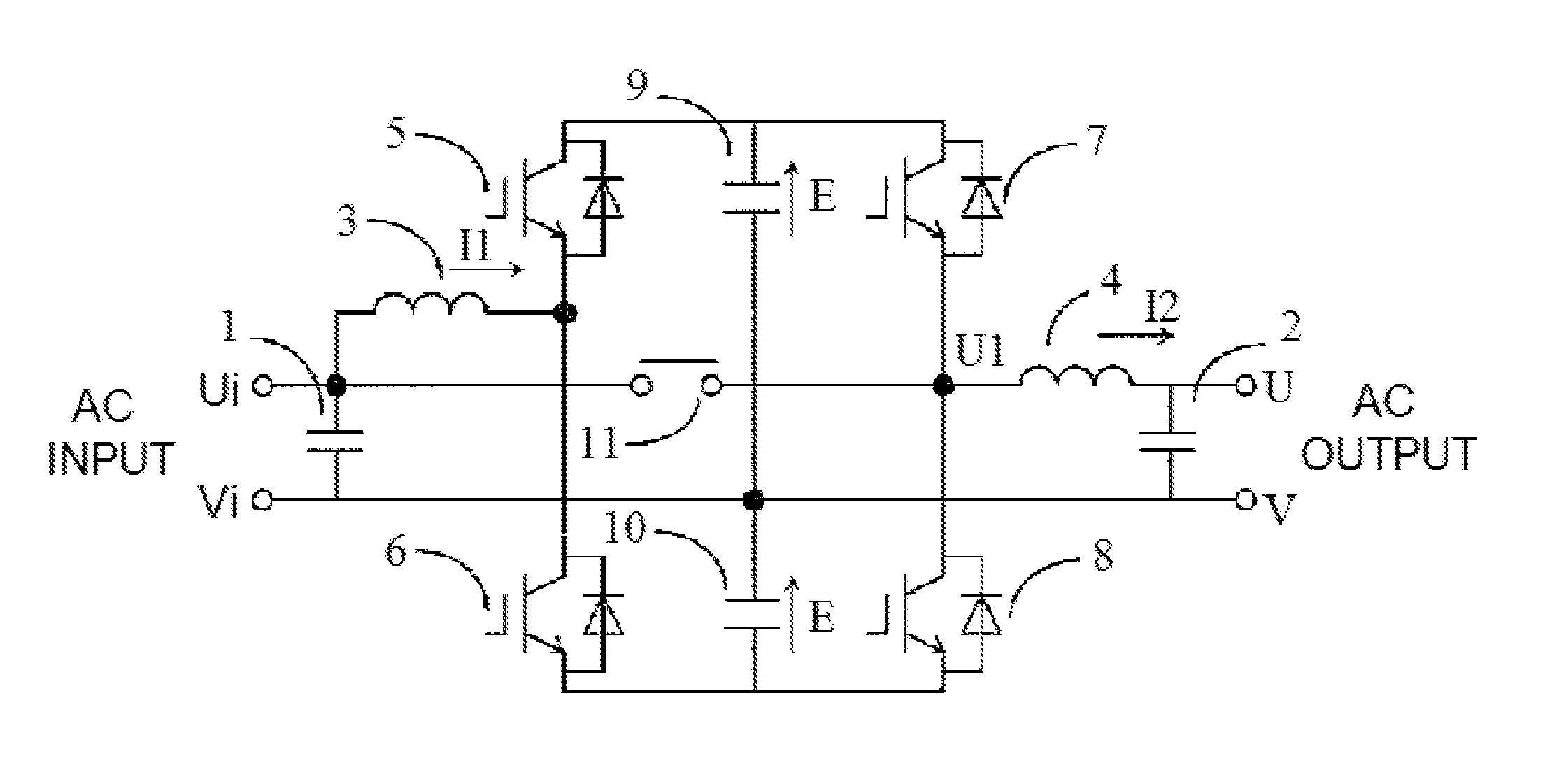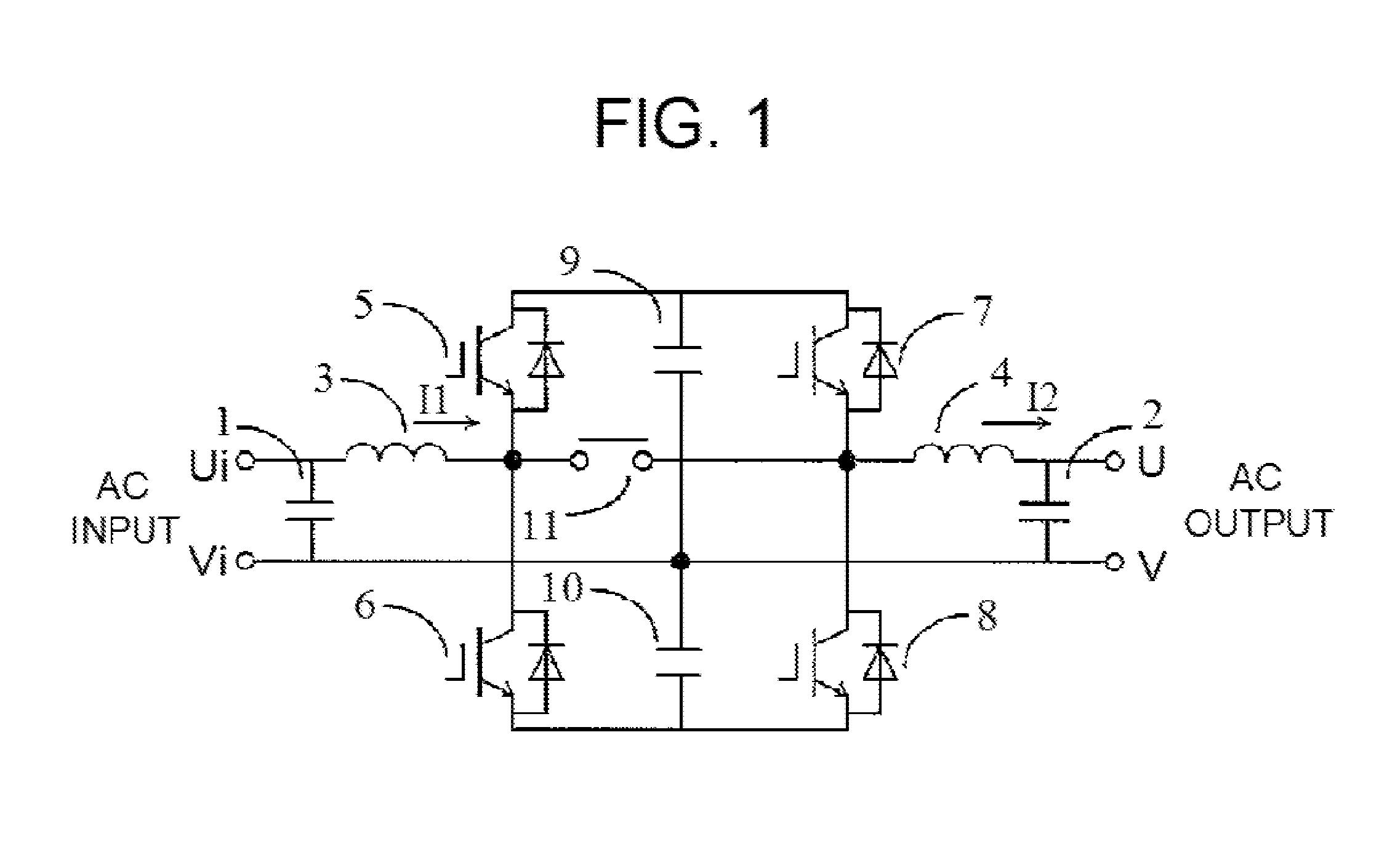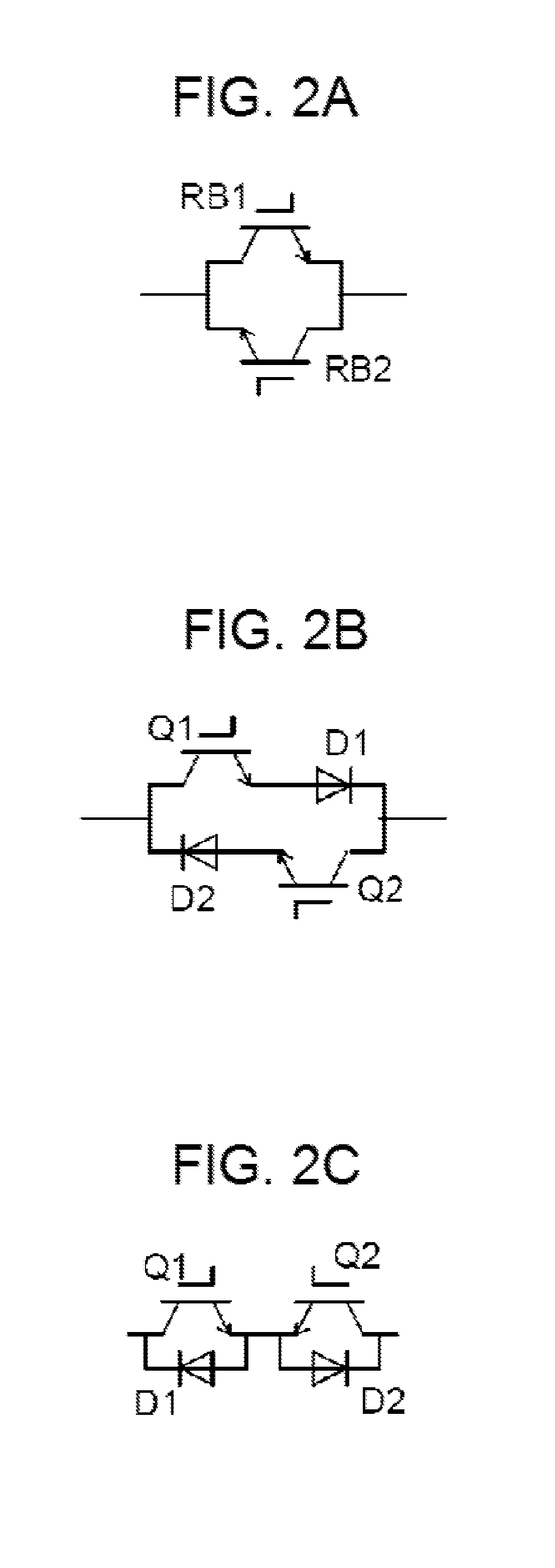Ac-ac converter
a converter and ac technology, applied in the field of ac-ac converters, can solve the problems of inability to reduce loss, and achieve the effects of reducing switching loss, reducing inductors' size, and keeping the loss of rectifiers sufficiently small
- Summary
- Abstract
- Description
- Claims
- Application Information
AI Technical Summary
Benefits of technology
Problems solved by technology
Method used
Image
Examples
example 1
[0036]FIG. 4 is a circuit diagram showing a first working example of the invention, while FIG. 5 to FIG. 7 are diagrams showing operation waveform examples of the first working example.
[0037]An AC-DC conversion / DC-AC conversion circuit configured of semiconductors in FIG. 4 is configured by a first IGBT series circuit wherein IGBTs 5 and 6, to each of which a diode is connected in anti-parallel, are connected in series, a second IGBT series circuit wherein IGBTs 7 and 8, to each of which a diode is connected in anti-parallel, are connected in series, and a capacitor series circuit wherein capacitors 9 and 10 are connected in series being connected in parallel.
[0038]A inductor 3 is connected between one end Ui of an alternating current input and a series connection point inside the first IGBT series circuit, a bidirectional switch 11 is connected between the one end Ui of the alternating current input and a series connection point inside the second IGBT series circuit, and a inductor...
example 2
[0054]FIG. 8 is a circuit diagram showing a second working example of the invention. Portions the same as in FIG. 4 are given the same reference signs, and a description thereof is omitted.
[0055]Working Example 2, having an object of reducing switching loss in the step-down mode, is such that a bidirectional semiconductor switch 12 is added between U1 and V. An operating principle thereof is shown in FIG. 9. In the step-down mode, the bidirectional switches 11 and 12 are turned on and off alternately. This configuration is an alternating current chopper circuit wherein the voltage between U1 and V becomes equivalent to the input voltage when the bidirectional switch 11 is turned on, and 0V when the bidirectional switch 12 is turned on. For example, when taking the ratio when the bidirectional switch 11 is turned on to be a constant value of 0.9, regardless of phase, the output voltage becomes 0.9 times the input voltage. This circuit is such that the voltage change range is equivale...
example 3
[0058]FIG. 10, being a circuit diagram showing a third working example of the invention, shows an example of application to a three-phase circuit. This three-phase circuit is an example wherein the circuit of the first working example illustrated in FIG. 4 is configured using three circuits. The series connection point inside the capacitor series circuit of the circuit of FIG. 4 is taken as a neutral point potential of the three-phase circuit, and shared by the three circuits. The switching circuit is such that both a forward conversion circuit portion and reverse conversion circuit portion are connected in parallel to a capacitor series circuit (45 and 46) for each of the three circuits. The forward conversion circuit portion is such that a series circuit of IGBTs 33 and 39, a series circuit of IGBTs 34 and 40, and a series circuit of IGBTs 35 and 41 are connected in parallel to the series circuit of the capacitors 45 and 46. The reverse conversion circuit portion is such that a se...
PUM
 Login to View More
Login to View More Abstract
Description
Claims
Application Information
 Login to View More
Login to View More - R&D
- Intellectual Property
- Life Sciences
- Materials
- Tech Scout
- Unparalleled Data Quality
- Higher Quality Content
- 60% Fewer Hallucinations
Browse by: Latest US Patents, China's latest patents, Technical Efficacy Thesaurus, Application Domain, Technology Topic, Popular Technical Reports.
© 2025 PatSnap. All rights reserved.Legal|Privacy policy|Modern Slavery Act Transparency Statement|Sitemap|About US| Contact US: help@patsnap.com



